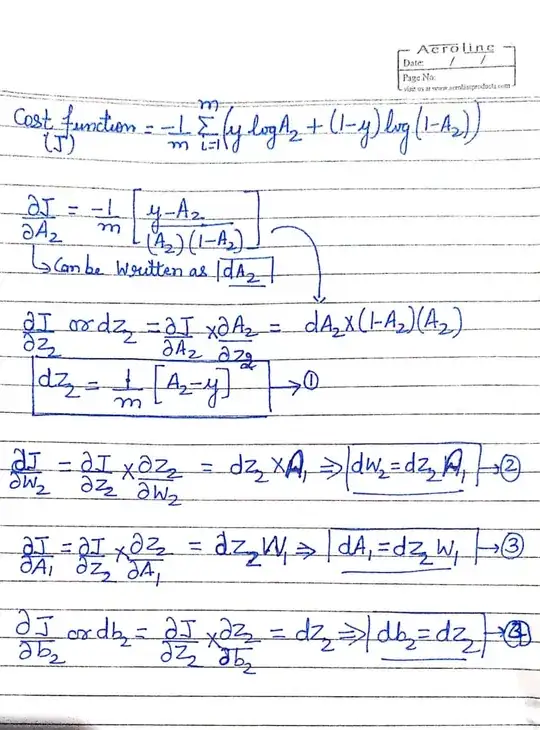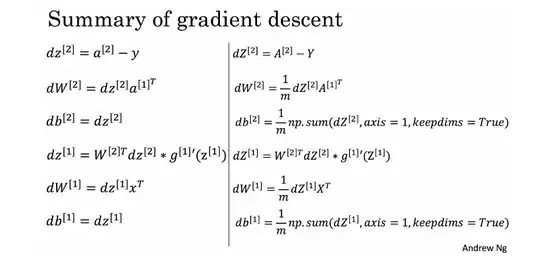I am using the cross-entropy cost function to calculate its derivatives using different variables $Z, W$ and $b$ at different instances. Please refer image below for calculation.

As per my knowledge, my derivation is correct for $dZ, dW, db$ and $dA$, but, if I refer to Andrew Ng Coursera stuff, then I am seeing an extra $\frac{1}{m}$ for $dW$ and $db$, whereas no $\frac{1}{m}$ in $dZ$. Andrew's slides on the left represent derivative and whereas the right side of slides shows NumPy implementation corresponding to the right side equation.
 Can someone please explain why there is:
Can someone please explain why there is:
1) $\frac{1}{m}$ in $dW^{[2]}$ and $db^{[2]}$ in Andrew's slides in NumPy representation
2) missing $\frac{1}{m}$ for $dZ^{[2]}$ in Andrew's slides in both normal and NumPy representation.
Am I missing something or doing it in the wrong way?